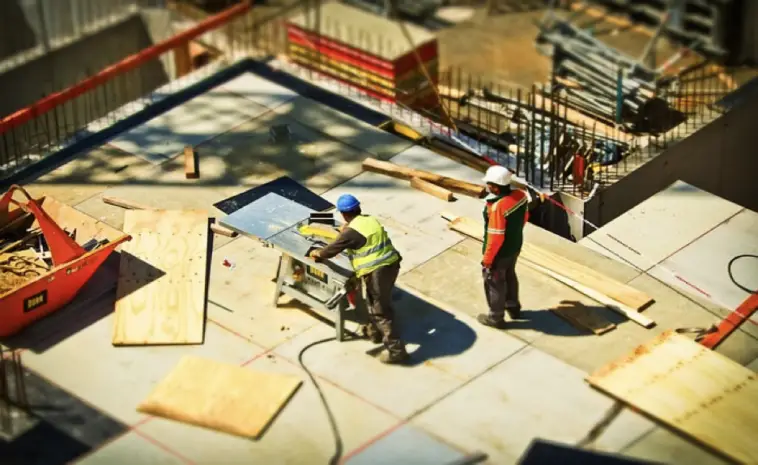Construction projects are complex undertakings that require careful planning, execution, and management. The intricacies involved, the magnitude of the decisions to be made, the financial implications, and the concern for safety standards can all feel overwhelming. Whether you are a seasoned professional or a novice in the construction industry, it is essential to have a solid understanding of how to execute a construction project effectively. This step-by-step guide aims to simplify the process, providing you with the foundational understanding and practical strategies necessary to navigate your construction project from inception to completion successfully.
Step 1: Procure Materials and Equipment
Procuring high-quality materials and equipment is crucial for the success of any construction project. This involves sourcing materials from reliable suppliers who deliver on time and within budget. It’s important to carefully review product specifications and warranties to ensure they meet your project requirements.
In addition, it’s essential to have a system in place for tracking materials and equipment and managing inventory levels to avoid delays or shortages. The folks from Everpads can supply high-quality construction spare parts to enable you to execute your construction projects seamlessly. Regular communication with suppliers is critical to ensuring timely delivery and addressing any potential issues that may arise.
Step 2: Create a Detailed Project Plan
With the necessary approvals and permits, it’s time to create a detailed project plan. This should include a comprehensive breakdown of all tasks, timelines, and resources needed for each stage of the construction process. It is vital to have a contingency plan in case of any unforeseen circumstances that may affect the project timeline or budget.
The project plan must also consider resource allocation, including materials, equipment, and labor. It’s essential to clearly understand the roles and responsibilities of all team members involved in the project, as well as effective communication channels for updates and addressing any potential issues.
Step 3: Secure Permits and Approvals
Before any construction work can commence, securing all necessary permits and approvals is essential. This step involves submitting detailed plans and specifications to the local authorities, who will review them to ensure they comply with all relevant building codes, zoning ordinances, and safety regulations. The process can be time-consuming and require revisions, so factoring this into your project timeline is important.
Securing permits not only ensures legal compliance but also validates the safety and feasibility of your project. In some jurisdictions, inspections may be required at various stages of construction to ensure ongoing compliance. Remember, working without the necessary permits can lead to penalties, delays, and even a complete halt in construction, so it’s critical to tackle this step early in your project planning.
Step 4: Select Experienced and Reliable Contractors
Selecting the right contractors is crucial for the success of your construction project. It’s essential to thoroughly research and vet potential contractors, checking their credentials, experience, and references. Finding reliable and experienced contractors can save you time, money, and headaches in the long run.

Communication is key when working with contractors. Regular meetings and updates are necessary to ensure the project is on track and address potential issues. It’s also essential to have a clear contract outlining expectations, timelines, and payment schedules.
Step 5: Monitor Progress and Make Necessary Adjustments
Monitoring progress throughout construction is crucial for staying on track and addressing potential issues. This involves regular site visits, updates from contractors, and tracking project milestones. If any delays or unexpected challenges arise, making necessary adjustments is essential to keep the project moving forward.
In addition, keeping stakeholders informed about the project’s progress is essential for maintaining transparency and managing expectations. Regular communication ensures that everyone knows about changes or potential issues and can help prevent delays or misunderstandings.
Step 6: Complete Final Inspections and Handover
Once all the construction work is complete, it is crucial to conduct final inspections meticulously. These inspections guarantee the building complies with all relevant building codes and safety standards. Every aspect of the project is thoroughly examined to ensure that it meets the highest quality and safety requirements. If any issues or deficiencies are identified during these inspections, prompt action must be taken to address and rectify them.
After passing the final inspection, it’s time for the handover process. This involves transitioning the project from the construction phase to operation and maintenance. It’s crucial to have all necessary documentation and warranties in place and conduct a thorough walk-through with the client to ensure their satisfaction with the final product.
By following these six steps, you can easily execute a construction project. It is important to remember that communication, thorough planning, and regular monitoring are critical elements in achieving a successful outcome. By involving all stakeholders and addressing any issues promptly, you can ensure a smooth and efficient construction process from start to finish. Every construction project is unique and may require additional steps or adjustments. But by following this guide as a general framework, you will be on your way to easily executing a successful construction project.




